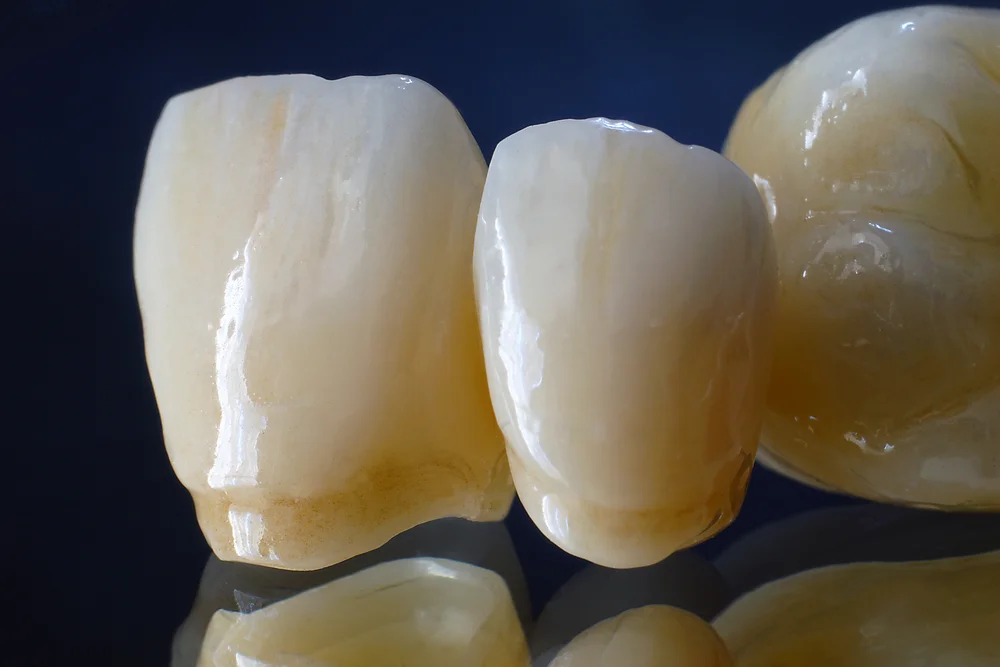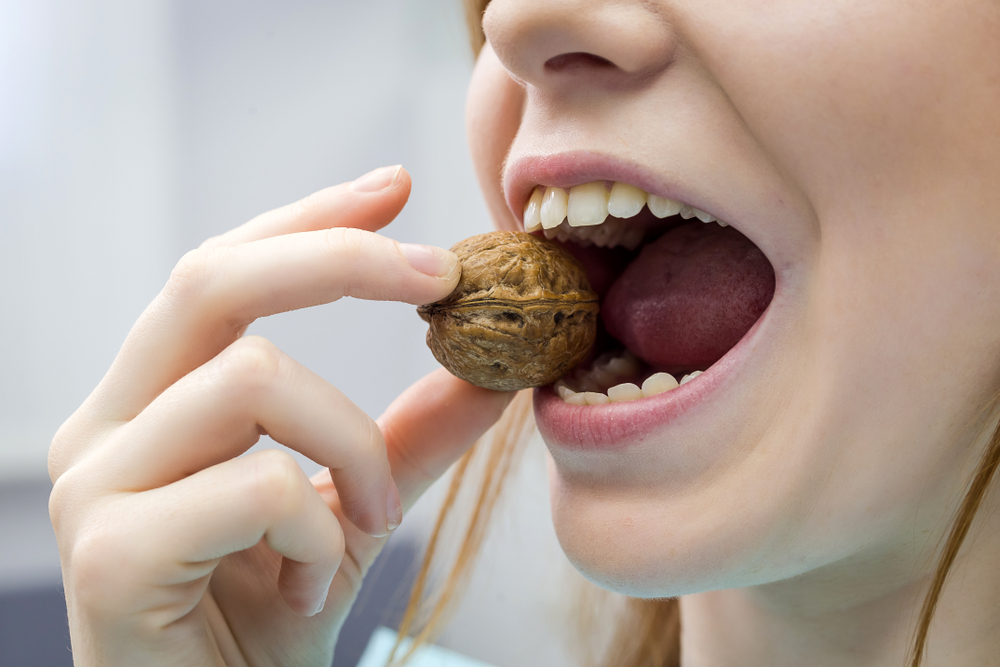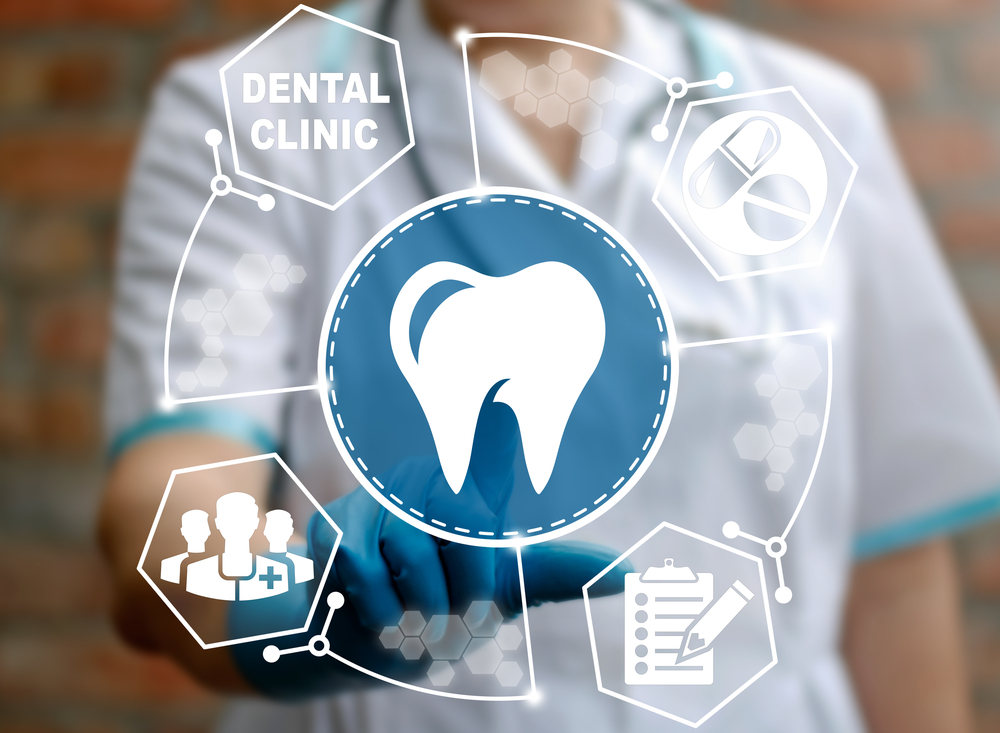- Dental crowns are used most often to entirely cover or “cap” a damaged tooth or implant.
- Zirconia crowns are made of zirconium oxide — a light-colored metal.
- Zirconia crowns are durable and low-maintenance, but more expensive than gold, porcelain or ceramic crowns.
Dental crowns are fixed devices that are cemented on to existing weak, damaged or broken teeth to support and preserve functionality. These restorations are also used to enhance the shape, alignment or aesthetic appearance of teeth.
Some crowns are comprised of materials such as ceramic, porcelain or gold, while zirconia dental crowns are made up of a naturally light-colored ceramic known as zirconium oxide.
The benefits of zirconia
Zirconia, a white crystalline oxide form of zirconium, is considered a Group 4 element. This designation on the periodic table means zirconium is part of the titanium family. Its chemical composition makes it exceptionally durable.
“Zirconium crowns are one of the strongest of all dental crown options. In fact, they are much stronger than crowns made of porcelain,” says Dr. Tim Stirneman, DDS of Compassionate Dental Care in Lake in the Hills, IL.
How strong is this material? Dr. Stirneman explains that, “In addition to being used on the teeth, zirconium is also popular for various prostheses in the surgeries of knees, hips, fingers, and ears.” And since this type of metal does not produce a toxic response to living tissue, patients will not experience allergic reactions or complications resulting from their body rejecting the material.
Zirconia appears translucent, resulting in a more natural-looking appearance. This material is also manufactured in a wide variety of shades, making it easy to accurately match the color of surrounding natural teeth. And as a bonus, it provides better stain resistance than acrylic or composite (porcelain and other ceramic material fused to a metal base).
Zirconia dental crowns have another unique advantage over other types of crowns: dental professionals can make them in their own office, thus reducing wait times and avoiding the need for temporary crowns.
With the help of CAD/CAM technology, dental milling machines are available at most dental laboratories and in some dental offices. The crowns are milled directly from solid blocks of zirconia. As such, they require less equipment, time, and materials to produce than other types of crowns. After they are milled, they can be adjusted to the exact fit of the patient’s tooth and cemented the same day — patients do not have to return for more than one appointment.
Disadvantages of zirconia crowns
There are several possible disadvantages to zirconia dental crowns. Even with recent dental advancements, the color of zirconium may not exactly match the hue of a patient’s natural tooth. If a patient is receiving the crown on a front tooth, they may prefer a lithium disilicate ceramic (e.max® is a popular choice) or a porcelain crown instead.
In addition, after this type of cap is placed, it may be difficult for dental professionals to detect decay underneath. If cavities form, the crown will need to be removed in order to treat the tooth.
In addition, while the crown itself is almost indestructible, the crowns’ hard material may rub against and damage the surrounding teeth.
Zirconia crowns, in general, are one of the most expensive types of crowns. However, if you properly maintain the crown, it will be worth the long-term investment. Low-cost crowns are more likely to chip and involve additional expense in the long run.
How much do zirconia crowns cost?
Costs vary widely, depending on region and the experience of your dentist. Fees can range between $900 and $2,900 per tooth. The cost may also vary depending on your dental insurance coverage — you may pay less if your insurer decides your crown is medically necessary instead of purely cosmetic.
In general, patients can expect to pay more for zirconia crowns than for porcelain and gold caps. Call your dental office and insurance company for payment plan options and price comparisons.
Alternatives to zirconia crowns
If you are interested in alternatives to zirconia, there are many materials available. Other permanent types used by dentists include gold, porcelain, ceramic, and porcelain-fused to metal (PFM). They each have their own unique advantages and disadvantages as listed below.
Gold
Gold is used as dental crown material for many of the same reasons that it is used for multiple purposes, from jewelry, awards, coins and bullion, to electronics, medicine, and glass-making. Gold is durable, easy to work with, can be melted, and has a beautiful color and sheen.
However, gold crowns are one of the most expensive cap options. If patients can afford them, dentists may recommend them for the back molars, since gold is extremely cavity-resistant and remains strong over time in tight areas.
Porcelain
All-porcelain crowns are usually considered the most natural-looking of all crown choices. They are also frequently used in patients who have allergies to metal crowns.
Since there is no metal used, dentists can use X-rays to see under the tooth to look for signs of decay. However, porcelain options are more likely to chip, which can be embarrassing and more expensive in the long run for maintenance.
Ceramic
Ceramic crowns are very similar to porcelain — they are both strong and aesthetically pleasing, although porcelain is considered slightly harder. Many patients choose ceramic crowns for this combination of durability and beauty.
“A very popular single-setting or same-day crown is the CEREC ceramic crown,” says Dr. Stirneman. “It could take a week or two to get the final product, and you must wear a temporary crown in the meantime. You will also need to come back in to get the permanent crown put on, but many patients are happy with their results.”
Porcelain fused to metal
As the name suggests, porcelain fused to metal (PFM) crowns are a combination of porcelain and metal. The porcelain overlay is color-matched to your natural teeth but the darker metal color could show at the gum line, especially if your gums recede.
Your dentist may recommend this type when metal is necessary for added strength. If you are looking to do a front tooth and want something super aesthetic and strong, zirconia layered with porcelain may be the best choice,” says Dr. Amanda Sheehan of Oakland Family Dental.
Choosing a zirconia dental crown
If you are interested in a zirconia crown, talk to your dentist. They will evaluate the pros and cons depending on your personal needs.
Mention if you are susceptible to tooth decay and if price is important. Your dentist will then consider durability, convenience, and aesthetics in helping you make your final decision.









